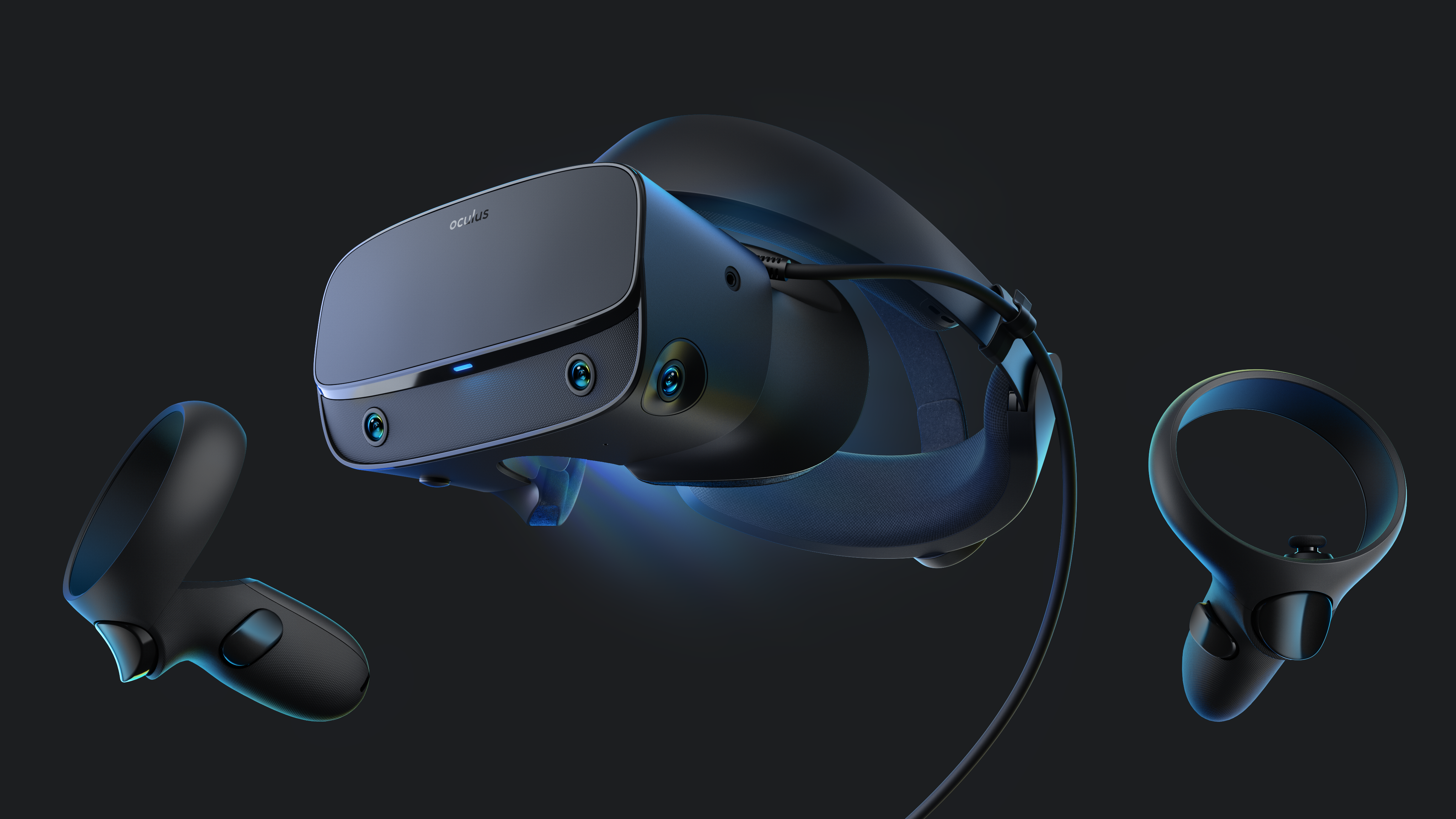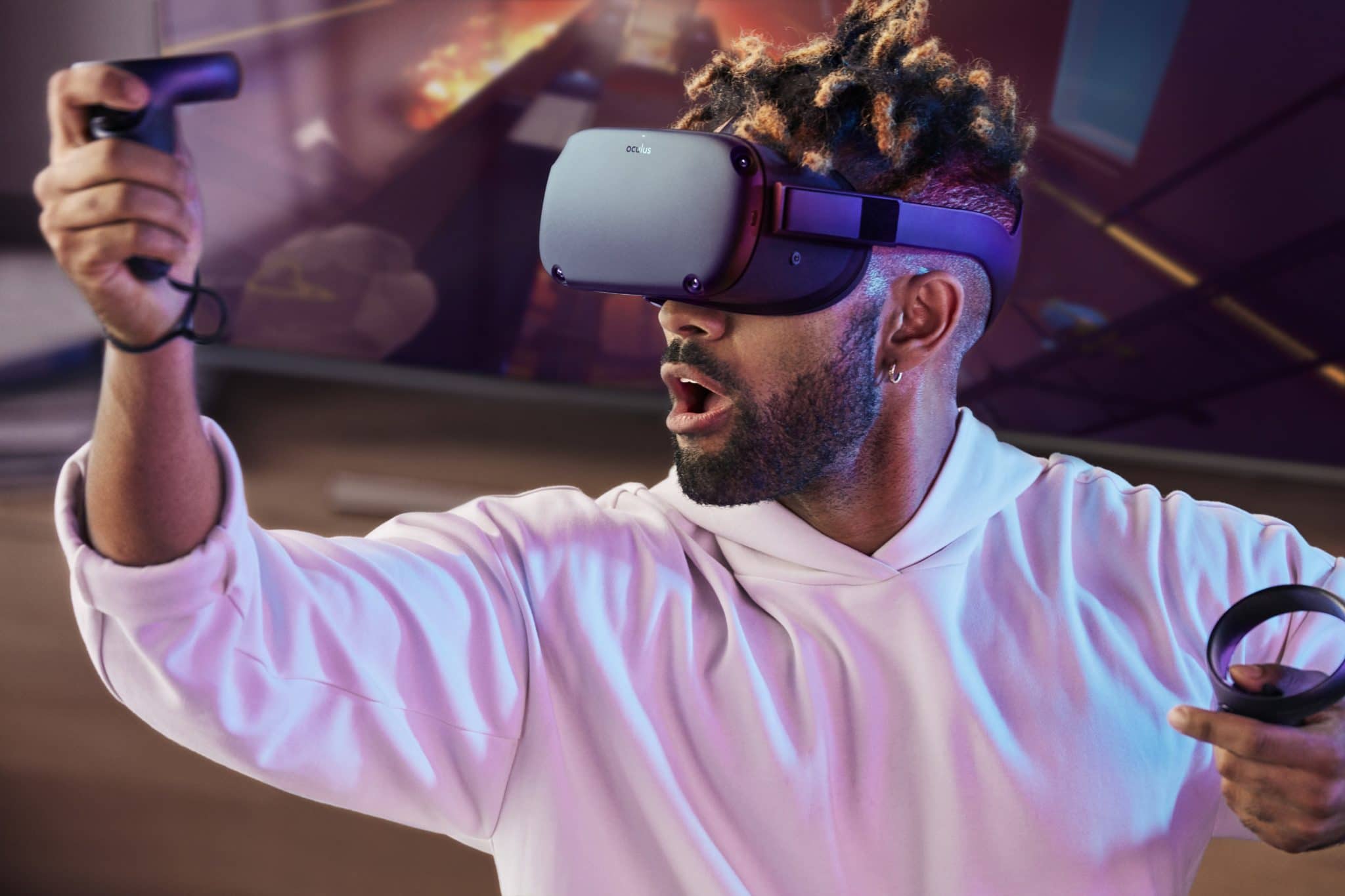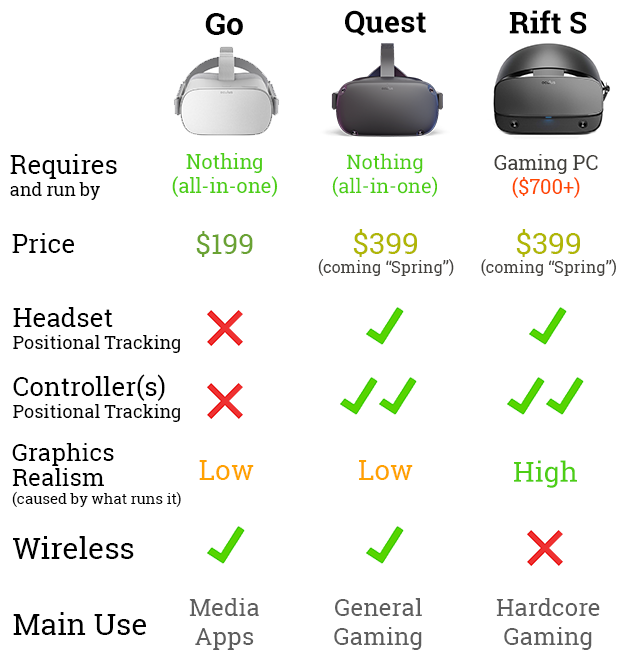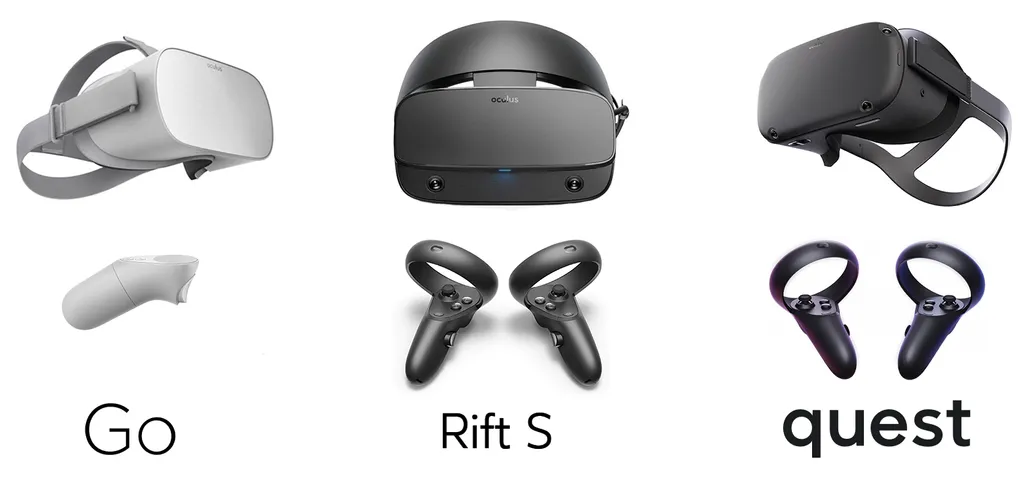UPDATE: this article has been updated to incorporate Oculus Rift S
Facebook’s line-up of VR headsets is steadily growing. What’s the difference between the Oculus Rift S and Oculus Go? What’s the Oculus Quest? Which should you buy? Read on for our rundown of the current Oculus line-up.
Oculus Rift S

Rift S is a positionally tracked VR headset which is powered by your gaming PC. It’s the flagship product of the Oculus lineup. Priced at $399, it replaces the original Oculus Rift, which was Facebook’s PC VR headset before it.
Rift S cannot operate without a gaming PC, and won’t work on most laptops. It comes with Touch controllers, which represent your hands in VR.
The Rift S is mainly used for gaming, but is also useful for social VR and 3D art. Thanks to the extreme power of PC graphics cards, the scope and graphical realism of Rift S experiences far exceeds that of the Go or Quest.
Oculus Go

Go is a basic 3DoF standalone (all-in-one) headset, priced at $199.
3DoF means that it has only rotation tracking, not positional. You can rotate your head, but any actual position movements will not be registered. Similarly, the controller (there’s only one) is essentially just a rotational laser pointer. Because of this, the headset can only be properly used when seated stationary.
Standalone means that the computing hardware and storage are all built inside the headset. Go doesn’t connect to your PC, other than for basic USB file transfers.
Go is primarily intended for media consumption, such as 360° video or watching Netflix on a virtual screen, and social VR such as AltSpaceVR. There are some casual games for the platform, but few major games.
Oculus Quest

Quest is an upcoming 6DoF standalone headset, launching in Spring for $399.
Like Go, it doesn’t connect to a PC- it’s standalone. But unlike Go, it has full scale positional tracking and the Rift’s great Touch controllers. Think of it as a happy medium between the two.
The headset has 4 onboard cameras which perform inside-out tracking, so there are no sensors to set up or wires.
Quest is being marketed as a games console, and gaming seems to be the focus of the headset’s launch lineup.
Which To Get? Wait For Quest?

Oculus Go and Quest are meant for people who don’t own a high-end PC. If you do own one, the Rift S is almost certainly the better choice. You’ll be able to play a wider range of games than Quest, and the graphics in those games will be better.
If you don’t own a high-end PC, the question of whether to wait for Quest is one of what you can afford. Thanks to its positional tracking and Touch controllers, the Quest will deliver a much more immersive experience than Go. While the $399 price point is double that of Go, we feel that the advantages are more than worth it, especially if you’re a gamer.
If you only want to try out VR for a low price or mainly want to watch non-interactive content, Go is a great choice. But if you’re interested in full interactivity or gaming- wait for Quest.


























